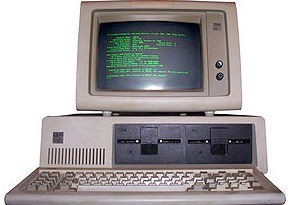Readers who know what ‘D’ stands for in EBITDA may choose to skip this post.
Before I dive further into matters of corporate finance in future posts, let me explain a couple of terms. Say, your Girl Scout troop is selling cookies* for $4 a box and you buy them at the baker for $2. You are doubling your money and MBA types call it a ‘mark-up’ of 100%. I know that percent has to do with much dreaded fractions, but they do show-up when you are dividing numbers.
So, you push the girls in the troop hard, cajole your friends and family and colleagues, and sell 200 boxes. $800 that you collected is your troop’s ‘revenue’ or ‘sales.’ $400 that the baker got is ‘cost of goods sold.’ $400 that the troop kept is your ‘gross profit.’ Being half of the total, it’s called ‘gross profit margin’ of 50%.
Extra credit: Explain how 50% margin is 100% mark-up.
Your troop paid for a field trip and bought some awards for top sellers, to the tune of $320 in ‘expenses,’ which left you with $80 in the kitty. Forgetting for the moment that it’s a non-profit, $80 is your troop’s (net) ‘profit,’ officially called ‘earnings.’
Extra credit: Your troop only wanted to make enough money to cover $320 in expenses or ‘break even.’
How many boxes did they have to sell?
Accountants like things in neat columns, since they add and subtract numbers all day long. They draw lines across to make totals easier to see. Everybody wants to know how much money they made and get to keep (after taxes). That’s the number on the bottom, (below) the ‘bottom line.’ If you spend more than you take in you suffer a ‘loss.’
Some say that humans developed counting and writing to maintain business records, as they learned to observe Sun and the stars to help predict growing seasons. It was a gradual process to nail down ideas of negative numbers or a zero and to agree on symbols to record them on a page. A few centuries ago bookkeepers in Europe started putting down figures showing a loss in red ink instead of everyday black. Companies that make money are ‘in the black’ rather than ‘running red ink.’
Cookie Profit and Lost (P&L) Statement
- Sales $800
-
Cost of goods $400
-
————————–
-
Gross profit $400
-
Expenses $320
-
————————–
-
Earnings $80
Companies total-up their results for shareholders four times a year and publish a ‘quarterly earnings release.’ Now you can read through one.
*Actual Girl Scout Cookies economics and politics are a bit more complicated, as most things in life are upon closer inspection. People study accounting and finance for a decade to become competent CPAs or tax attorneys.
– For nerds and technology history buffs: It was putting numbers in columns in a program called a ‘spreadsheet’ that made the original IBM PC, which cost well over $1000, commercially useful. This gave a deciding push to the entire personal computer industry. Microsoft Excel (originally Multiplan) was not the first spreadsheet program around. VisiCalc appeared on Apple II in 1979 and on PC in 1981. Hugely popular Lotus 1-2-3 was introduced in 1983 and it was only in 1988 that a Windows version of Excel started overtaking it.


Leave a comment